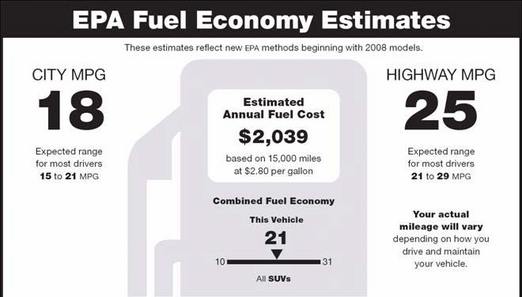This article at Consumer Reports caught my eye, as it says that the Environmental Protection Agency has updated its fuel-economy tests to better reflect modern driving habits. This change is the first real change since the fuel-economy tests were set in the 1970s. The outdated standard is the reason almost all drivers get lower actual mileage results than the advertised efficiency rating on cars.
The U.S. Environmental Protection Agency recently proposed to change the way it estimates the fuel economy published on vehicle window stickers in order to make the estimates more consistent with real-world driving. The new proposal would reduce the city mileage estimates for most vehicles, starting in the 2008 model year, by 10 to 20 percent. Highway mileage estimates would drop 5 to 15 percent.
Consumers have long complained that their cars couldn’t achieve the mpg estimates advertised on the window stickers. In an analysis last year, Consumer Reports found that 90 percent of the 303 cars and trucks we recently tested got worse mileage than their EPA estimates indicated. (See our October 2005 report on fuel economy available to subscribers). On average, gas-powered cars fell 9 percent below the estimates on their window stickers. Hybrids, which buyers typically choose for their fuel economy, fared even worse, averaging 40 percent below estimates.
. . .
The discrepancies stem from an antiquated test and changing conditions on the road. For example, the test, implemented in the late 1970s, measures highway driving at an average of 48.5 mph and a maximum of 60 mph. Since then the national 55-mph speed limit has been repealed and some states have set limits as high as 75 mph. So today’s highway speeds are much faster.
Drivers also spend much more time in stop-and-go traffic. The calculation for the combined EPA city/highway mpg number is based on 55 percent city driving and 45 percent highway. Today, many cars spend an average of 62 percent of their time in city stop-and-go traffic, where fuel economy is the lowest.
And there are a few other notes on the differences between now and 30+ years ago, what the new tests will include, and how Consumer Reports does testing different from the EPA. (original link and image via The Consumerist)
[tags]EPA to change fuel-economy testing, New fuel-economy testing standard coming on 2008[/tags]
